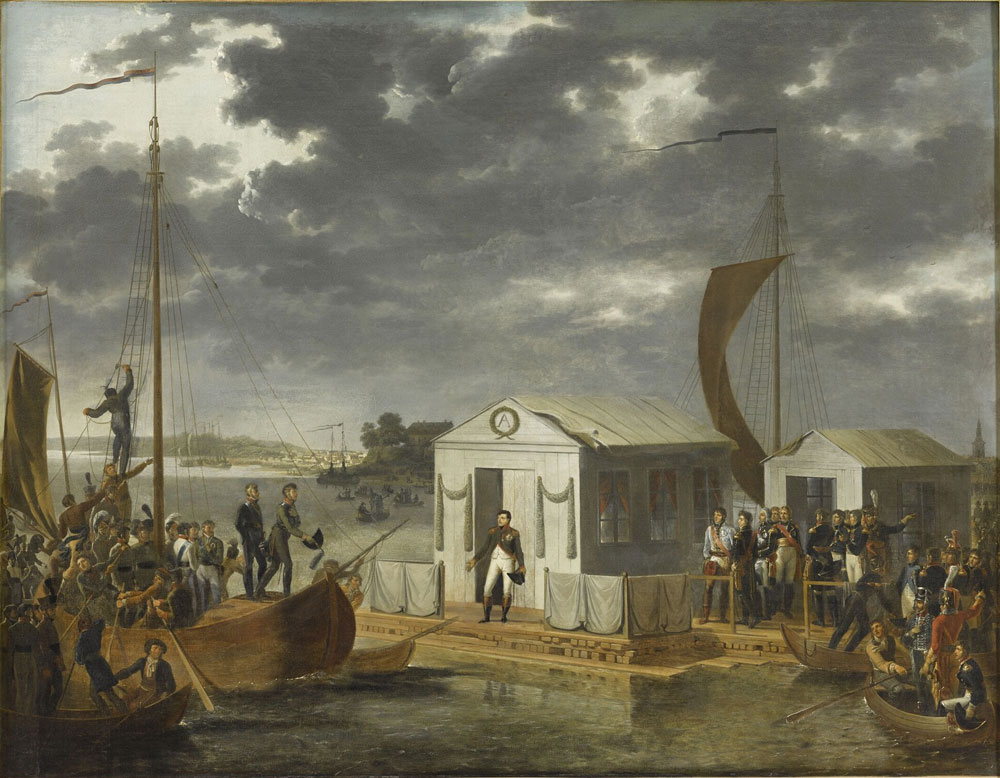Setting the Scene

“Poland, Lithuania and Prussia From the latest Authorities” from A New Geographical, Commercial and Historic Grammar. Thomas Kitchin, mapmaker, 1790.
At the end of the eighteenth century, the web of small European countries was in danger of being swallowed by their neighbours. France, the United Kingdom and Russia all were expanding their empires. The fate of Lithuania had been determined in the 1807 Treaty of Tilsit (Tilzė in Lithuanian). The Grand Duchy of Lithuania (GDL) had folded into Prussia and Russia.

Napoleon and Alexander, Czar of Russia meet at the conclusion of the Treaty of Tilsit, June 25, 1807. Oil on canvas. Artist: Adolphe Roehn. Collection of the Palace de Versailles
The small countries were forced to form alliances with their neighbours. They hired foreign mercenaries to supplement their own armies. Unaligned countries such as Switzerland supplied soldiers to both the UK and France in the interests of ensuring their own survival.
Ethnic Lithuanians joined the armies of countries that would assist the return of Lithuania’s independence. This meant that many GDL men joined Napoleon’s army.
The tide was turning against Napoleon. His armies were shrinking as men became prisoners or deserted. Among those were Lithuanians who left Napoleon’s army in Italy, Sicily, Spain and Malta. Ninety-nine Lithuanians found themselves serving, not on the battlefields of continental Europe, but in British North America. as part of the Swiss-based de Watteville Regiment.
This is their story.

